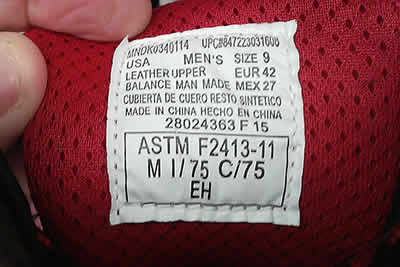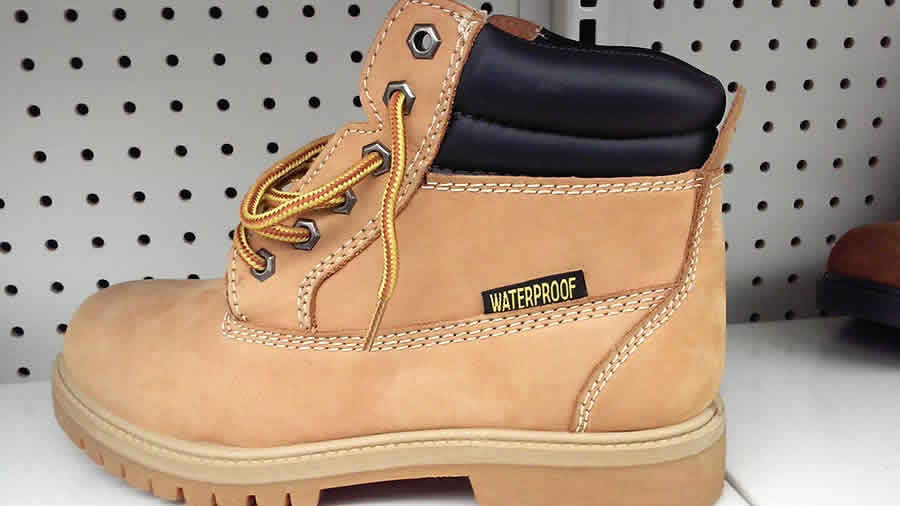A simple way to give you or your employees an extra layer of shock protection is to have them wear electrical hazard (EH) rated shoes or work boots
EH shoes or work boots offer shock protection from lower voltages – up to 600 volts in dry conditions by providing an insulating layer between a person’s feet and ground potential. EH shoes have insulating soles that must meet ASTM F2413-11 standards.
Check the label, typically sewn onto the tongue of the shoe and look for the ASTM F2413-11 (EH) rating

This picture was taken at a local department store. I went to the men’s work-shoe aisle and could find several brands of boots that were EH rated. In some cases, the EH boots were less expensive than boots that were not EH rated.
NFPA 70e® article 130.7(C)(8) states that EH footwear can only offer secondary protection from shock hazards. Primary protection, such as insulating gloves must still be worn when working inside of the restricted approach boundary. This is due, in part, because EH shoes, unlike gloves, are not required to be periodically tested. The insulation value can also be compromised if the shoes become wet, oil soaked, or they get conductive material, such as metal chips imbedded in them.
ASTM testing requirements for EH footwear
Hugh Hoagland of E-Hazard wrote and excellent article concerning EH rated footwear in the April 01, 2011 edition of Occupational Health and Safety Magazine. In the article, Hugh states the ASTM testing requirements for EH footwear:
If shoes are EH rated, the soles of the shoes must withstand the application of 14,000 volts at 60 hertz for one minute with no current flow or leakage current of more than 3 milliamps under dry conditions.
Based on these standards, it’s easy to see how the shoes help to protect you. You’re basically walking around on a pair of big resistors.
NFPA 70e® footwear regulations
Although NFPA 70e® does not require EH rated footwear for shock protection, it does require that heavy-duty leather shoes or boots be worn when working in situations where an arc flash hazards exists with incident energy levels above 4 calories/cm2. In situations where the incident energy is below 4 calories/cm2, heavy-duty leather footwear is required on an as-needed basis. See tables 130.7(C) (16) and (H.3(b).
Most people would agree that heavy duty leather footwear is a good idea when working in an industrial or construction environment. As we have just seen, NFPA 70e® requires it when we are exposed to arc flash hazards. So, the next time you find yourself needing a pair of heavy-duty leather work boots, why not give yourself an extra layer of shock protection and pick-up a pair that are EH rated.

Sign up for our free weekly Safety Tips and receive one weekly, right to your inbox!








Thank you for explaining that EH shoes have shock protection from lower voltages. My brother has been worried about his new job and being able to get proper footwear. I will send this to him as well as maybe help him look around for who to hire for that.